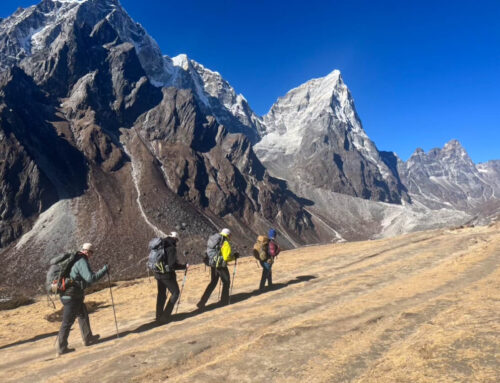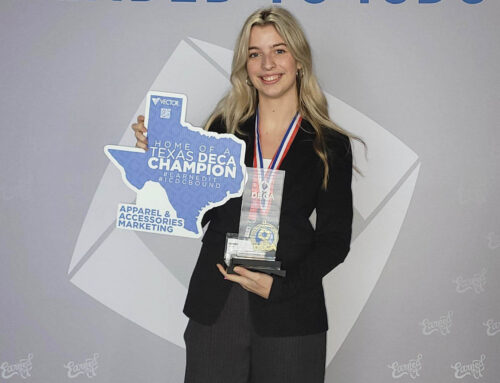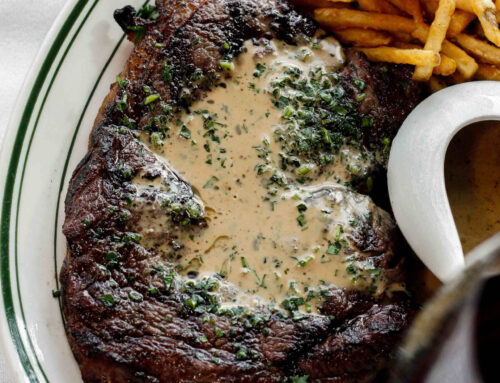Lindsey Hranitzky is a cross between Will Schuster, the high school teacher on Glee, and Dr. Temperance Bones from the titular television show. Hranitzky teaches forensic science at Lake Highlands High School, sharing the latest techniques and procedures students may one day use to solve murders and other crimes.
Hranitzky grew up in Lakewood and studied animal science and entomology at Texas A&M University. Her favorite course was forensic entomology, the study of insects in criminal investigations. Because certain bugs are attracted to dead bodies, they can help scientists estimate time, location and cause of death.
Lake Highlands students can take forensic science as an elective course, and some admittedly see the hour as just one more in a long day. But many hope to pursue a specialty in criminal justice and envision forensic science as the foundation of a future career, she says.
“I have students interested in becoming CSI agents, medical examiners, lawyers, SWAT team agents, arson investigators, police officers, coroners, forensic anthropologists, serologists, fire marshals and others. It’s a diverse group. To have this background information is useful as they pursue their studies and careers.”
Teaching the course gets a little messy, and students say that’s the draw.
“I like the classes to be hands-on,” Hranitzky says. “We do blood spatter analysis, hair and fiber examination, crime scene investigation with mock crime scenes, fingerprint analysis and foot impressions. We study forensic psychology, including serial killers and criminal profiling, and we look into forensic anthropology, including skeletal and facial reconstruction.”
In addition to receiving equipment from Richardson ISD, the forensics department has been supported over the years by Wild for Cats, Lake Highlands’ academic booster club. They recently received new cameras that allow students to take digital crime scene photos, and they use Diablo Highway, a virtual online laboratory that simulates the crime scenes of unsolved murders. Another kit, useful when unidentified bones are discovered, helps find missing persons based on facial reconstruction.
Hollywood loves a good crime story, and Hranitzky encourages her students to watch movies and television shows that accurately depict the work of forensic scientists. She occasionally brings in videos, such as snippets from Netfix’s The Staircase, to demonstrate ways forensic science helped to solve a case. (Spoiler alert: That killer may, or may not, have been an owl.)
Hranitzky warns her charges of the CSI Effect, widely known in legal circles to influence public perception and even jury deliberations. The term, first reported in USA Today in 2004 and named for the CSI: Crime Scene Investigation television show, refers to the belief that jurors in criminal trials today are more likely to demand forensic evidence as proof of guilt and less likely to convict without it.
Hranitzky teaches about the O.J. Simpson murder case, where investigators were seen in television news coverage tromping through the victims’ blood, and a detective transported blood from the crime scene to O.J.’s home before booking it into evidence. Defense attorneys at trial used these as indicators of sloppiness in the collection of forensics or evidence planted by dirty cops. She also teaches about the assassination of President Kennedy in Dallas, where conspiracy theories abound.
“I like to make real-world connections. We take case studies and dissect them. It’s interesting to hear what the students think. They hear about current cases on television or the internet and come into class trying to figure them out. We talked a lot about Gabby Pepito when she was missing. That case was heartbreaking.”
Hranitzky knows not all her students will enter careers that put their forensic skills to use. Every good citizen, though, will benefit from understanding its principles, and some may need the concepts while serving on a jury.
“It’s important to know why cases did or didn’t go well in court,” she says. “Perhaps evidence wasn’t collected properly. Maybe it wasn’t preserved or labeled correctly. Every case is different. Our natural curiosity comes over us, and we want to know the why about things. It’s a joy to teach this class, and I love what I do. I get to connect with the students and see what they are interested in, and I weave that into the lessons.”
Hranitzky began with three sections of her course, and now she teaches 150 students in six classes. She also takes the Wildcat Forensics Team to competition. She’s careful not to let the classroom discussion get gruesome, and she warns students about photos they may opt not to see. Her kids know what they’ve signed up for, though, and they rarely take a pass.
On a warm day in April, students worked in groups with synthetic blood and a variety of instruments to create a multitude of blood spatter patterns. They were analyzing what blood looks like at a violent crime scene. But could Hranitzky be teaching them how to get away with murder?
“No,” she laughs. “They joke about that, but I tell them to not even think about it. They’ll get caught every time.”






